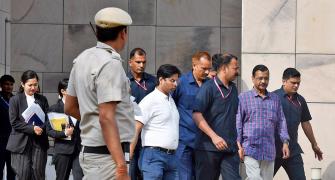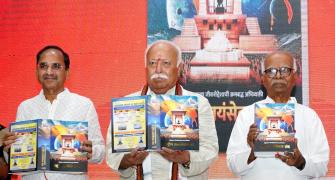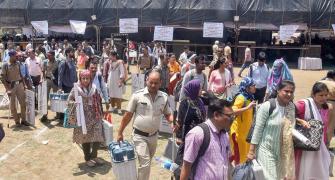"The revolt of 1857 was unique in the sense that it saw various sections of the society working towards a common objective, without any particular group getting dissolved into a larger whole, as was witnessed in the Gandhian era," said Badri Narayan Tiwari of the Gobind Ballabh Pant Institute of Social Sciences in Allahabad.
Tiwari, told PTI, "It is only when seen in a narrow perspective that one can assume that the lower castes had nothing to do with the revolt of 1857, as these underdogs, who might not have participated in the armed struggle due to their inability to access weapons, had nevertheless infused vital energy into the movement, without which it could have never achieved its magnitude."
"A careful appraisal of the period shows that unsung heroes like Matadin Bhangi and Jhalkari Bai made possible the legends woven around the likes of Mangal Pandey and Rani Laxmi Bai," Tiwari said.
Elaborating on the point, he said Matadin Bhangi was the one who had taunted Mangal Pandey about having bitten cartridges greased with pig/ cow fat, which made a rebel out of the once loyal soldier.
"The name of Matadin Bhangi can be traced in some documents of that era and it also finds ample space in the Amir Khan starrer film as well as the recent works based on Pandey," Tiwari said.
However, surprisingly, most people have failed to understand the significance of what appears mainly as a "nasty taunt" from a lowly born.
"The words of the humble sweeper had, in fact, awakened the sense of pride and acted as a catalyst arousing an upper caste man Pandey and his ilk, that had been lying dormant for ages," Tiwari said.
Similarly, the names of Balluram Mehtar and Chetram Jatav come forth as glorious examples of national resurgence. Both these low-caste men, who had plunged themselves into the uprising that began with the Barrackpore uprisings, were tied to trees in Etah district of Uttar Pradesh and shot dead as per the directives of British officers, Tiwari pointed out.
Tiwari is critical of the contention of historians that lower caste people had sided with the Britishers in 1857 and it was their support that allowed the East India Company to crush the movement so successfully.
"These historians are guided by the Ambedkerite logic that the lower castes could never have any sympathy for the Hindu ruling class, which was spearheading the revolt. However, this argument fails to take into account the fact that the 1857 era is now being utilised by the Dalit community itself to assert its pride," he said.
"A number of Dalit writers have produced literature that seeks to give an insight into the struggles of lower caste men and women of that era. This has thrown up a number of icons, which include besides Matadin Jhalkari, Mehtar and Jatav, Uda Devi, Vira Pasi, Banke Chamar and many more," said Tiwari who is conducting research into dalit literature.
He said these icons of dalits have also been lapped up and effectively used by pro-dalit outfits, notably Mayawati-led Bahujan Samaj Party.
Jhalkari Bai, a maidservant of Laxmibai, has been given an iconic status by the BSP which invokes her name in Bundelkhand region to expand its electoral base.
"Similarly the name of Uda Devi, a pasi woman known to be closely associated with Begum Hazrat Mahal of Lucknow, is also being used by both the BSP and Ram Vilas Paswan's Lok Janshakti Party in Bihar for their political gains," Tiwari said.
He said this phenomenon, which prima facie appears to be merely a political statement, deserves closer attention as one finds in it, the key to resolve the socio-economic crisis that have driven the Hindi belt along caste lines.
"The 1857 era shows us that the society was capable of uniting for a common cause, surmounting all contradictions.
"In fact, the present day era can take a leaf out of that period and can lay the foundation for an equitable society by educating all the social strata that their forefathers had fought a common enemy," he added.







